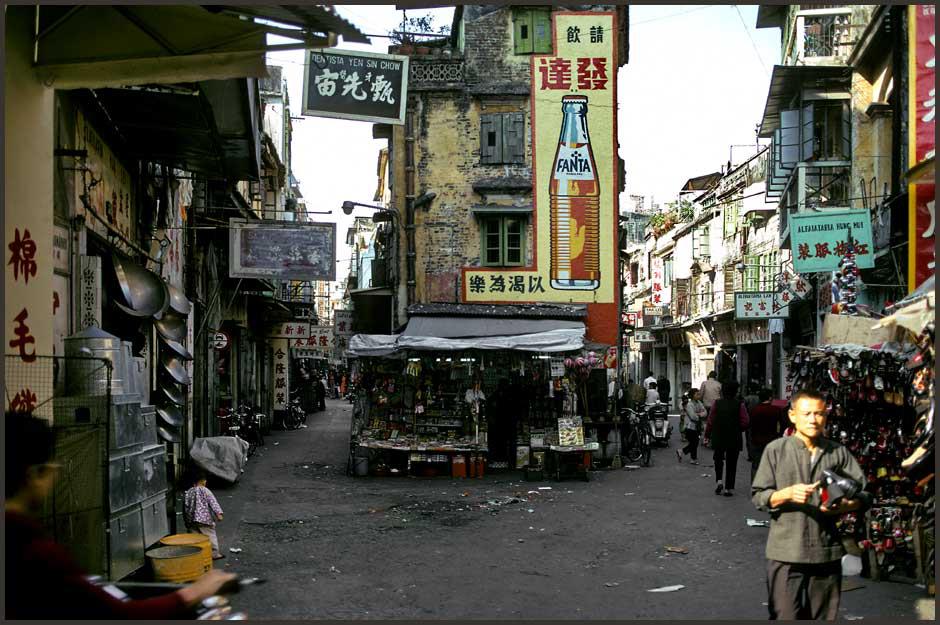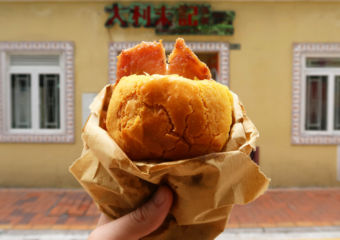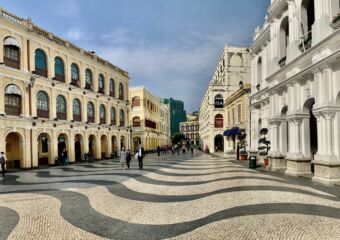Featured image – Credits: Karsten Petersen (1973). Sourced from Macau Antigo blog.
Planning a day trip full of culture and history but out of ideas besides the Ruins of St. Paul and other common spots? Macau is full of modern and contemporary buildings but there is a very genuine, historical and cultural vibe to the city amidst the glitz and glamor. Go down memory lane and explore some of Macau’s oldest streets for a taste of Macau in the bygone days.
Rua dos Ervanários
(See feature image above)
This street is definitely a must visit, especially if you are already in the city center and have visited the Ruins and everything there is to see around it. Rua dos Ervanários is situated in what the Portuguese called “tin-tins”, because of the abundance of antiques’ shops along it. Unfortunately, most of them have closed down, with a few resisting the test of time. However, it is still nice to walk around and find things that time couldn’t erase. Between all the new shops opening, there are still some souvenir and old knick-knack spots really worth seeing!
This, along with Rua das Estalagens and Rua da Porta de Pedra (the latter doesn’t exist anymore) gave the name to Sam Kai Seong Ip–according to the Official Gazette–, the Three Streets’ Association, one of Macau’s oldest Chinese associations. The group aims for the preservation of heritage, mainly those three streets. To prevent criminals from getting in, it’s said locals built an iron door when one could read “Ou Mun” engraved in Chinese characters. Presently, it is quite different than from when it was first built, but it still has a historical vibe to it. To know more about this spot, check here.
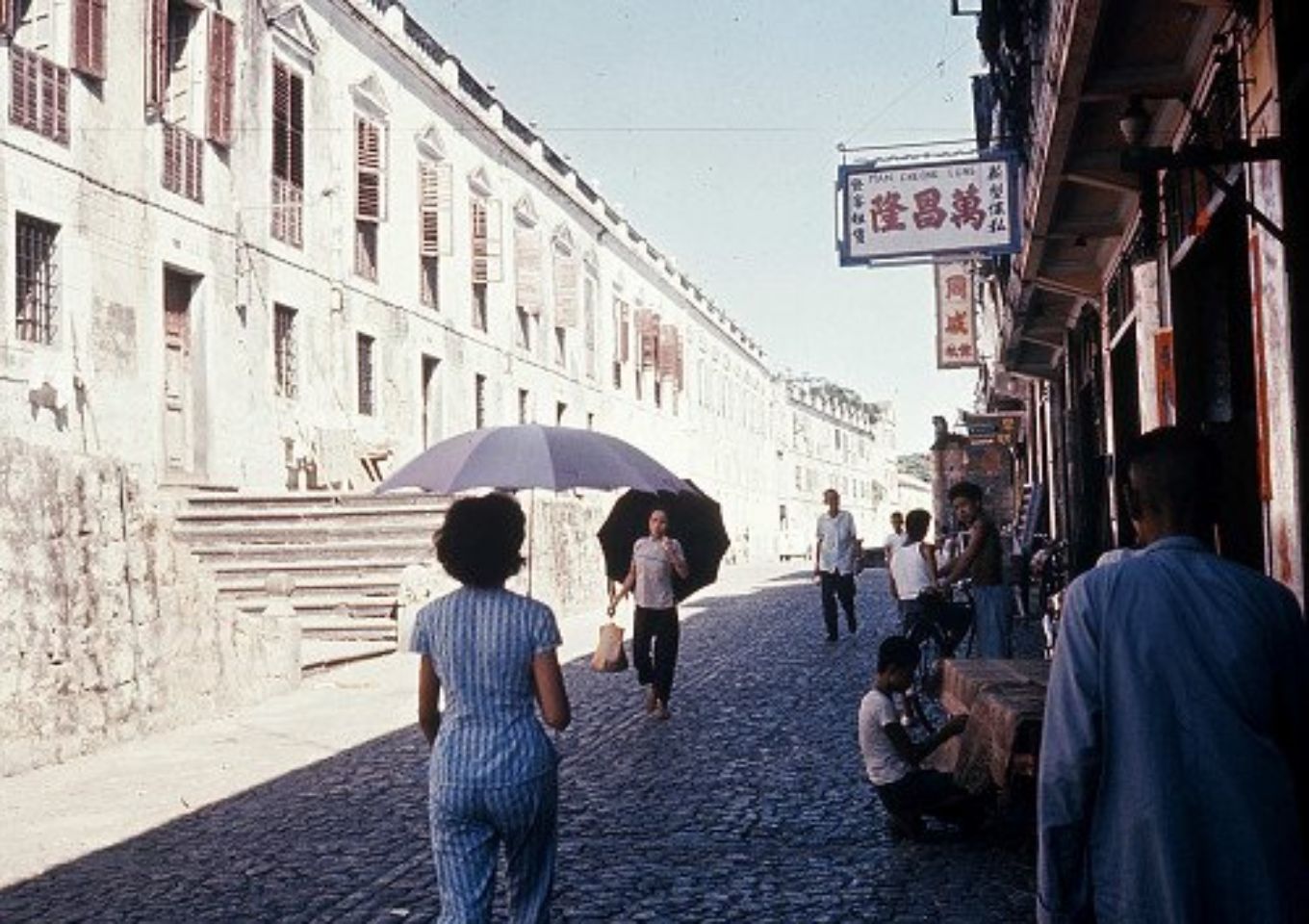
Source: Macau Antigo blog
Rua de Cinco de Outubro
Rua de Cinco de Outubro started with a different name: Rua Nova de El-Rei. This long and narrow street’s name was changed after October 5, 1910–the day of the victory of the republicans in Portugal)–in celebration of Portugal becoming a Republic. It was once one of the busiest ones in Macau. Its very first and original Chinese name was Si Máng Kai (呬街), which has no specific meaning, other than being the transliteration of the name “Simon”. Until the 18th century, the whole area–including Rua dos Faitiões, Rua de Tercena and Rua de Nossa Senhora do Amparo–was surrounded by water! Can you imagine? Well, geographically speaking, it was a bay and a port where boats docked.
According to a text by M. V. Basilio, the first extension of embankments works as from Rua de Cinco de Outubro at the Inner Harbour area commenced in 1873 and were ordered by the Portuguese Governor Januário de Almeida, Viscount of St. Januário (whose name was given to the public hospital–Hospital Conde de S. Januário). Rua de Cinco de Outubro is still a busy street with its own pace. It has a Chinese temple (Tam Kuang), lots of restaurants, a square for shows and concerts, and a night market on weekends. It’s a street worth exploring, for sure.
Rua de S. Paulo
Simply put, this leads the way from the Ruins of St. Paul to Camões Garden. Curiously unpopulated, it has one of Macau’s best wine and cheese restaurants, MacauSoul. It also features Cinematheque Passion, some antique shops, restaurants and a supermarket! In 1965, this path was as shown in the picture above. The origin of its name? Well, this one’s easy: it comes from the Ruins of St. Paul, thus having earned the monument’s name (in Portuguese).
Macau used to be a walled region, like many European cities and up in the fortress besides the canons, there are numerous artefacts and historical references along the way. One of the few remaining parts of the wall stands between the Cinematheque Passion and Rua de S. Paulo, so be sure to check it out.
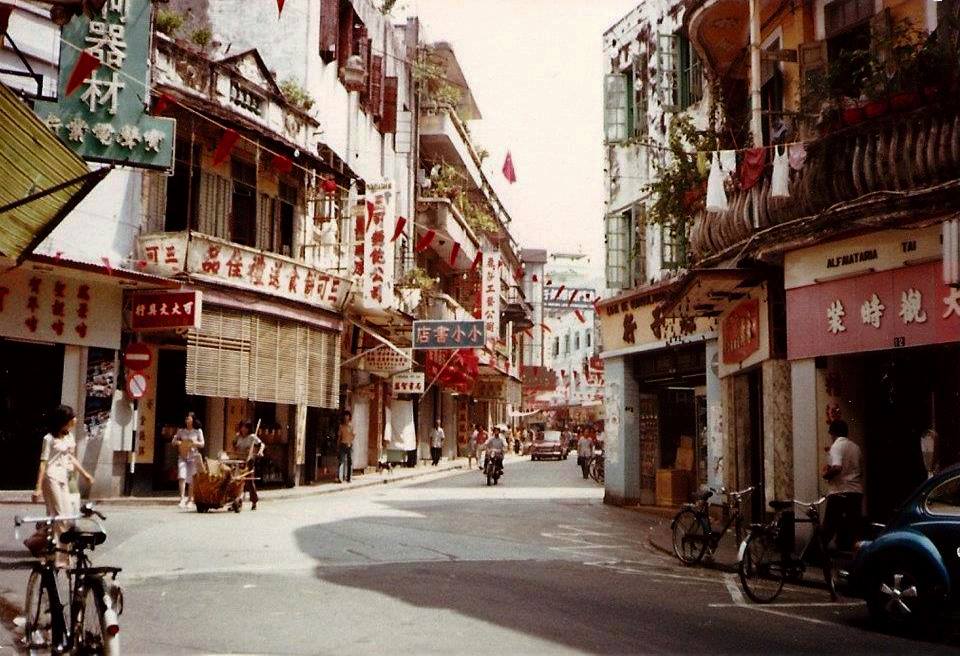
Source: Crónicas Macaenses Blog
Rua de S. Domingos
Rua de S. Domingos is one of Macau’s busiest streets. Besides several beauty products and clothing stores, a Catholic church and other shops, it also has a very interesting story. Leading the (crowded) way to the Ruins of St. Paul, it is one of the city center’s main arteries. Sometime around 1580, Spanish Dominicans arrived in Macau, founded Santa Maria do Rosário’s House and built a church in her homage.
The structure was made with nogging where the brickwork is contained in a timber frame, “tabique” in Portuguese. This in turn gave the name to the street: “Pán Cheong T’óng” (“Pán Cheong” is tabique and “T’óng” is a place of worship). However and for some reason lost in time and history, this street–as well as the neighbouring square–started being called Rua de S. Domingos (Pán Cheong T’óng Kái) and lasts until this day.

Rua da Felicidade circa 1900. Source: The Past of Macau Collection of Postcards by Ho Weng Hong
Rua da Felicidade
The name of this street translates to “Happiness Street” in English and the name came from its original and primary trade during the 19th century–prostitution and opium for all the sailors and seamen stopping in Macau. It used to be known as the “neighbourhood of pleasure” and all its opium and tea houses and brothels made Rua da Felicidade one of the streets in Macau with the worst reputations.
After the Second World War, the mentioned above commercial “activities” were officially prohibited and this “happy street” went legit. Nowadays and thanks to several heritage preservation efforts, all these three-storey houses are the best well-preserved old brothel complexes in China. To know more about one of Macau’s most (in)famous streets, click here.
Rua de Tercena
This is one of the oldest streets in the city still preserving its original trade–commerce. According to the Cultural Affairs Bureau (ICM), there are records of this street in the Macau Official Gazette of 1869. Its closeness to the boat port made it perfect to import goods, such as food and others.
As most streets in the city, this was also revamped and now hosts several cultural and religious activities. Most of the area still has historical buildings and several associations are determined to preserve its architecture, breathing new life to the buildings.
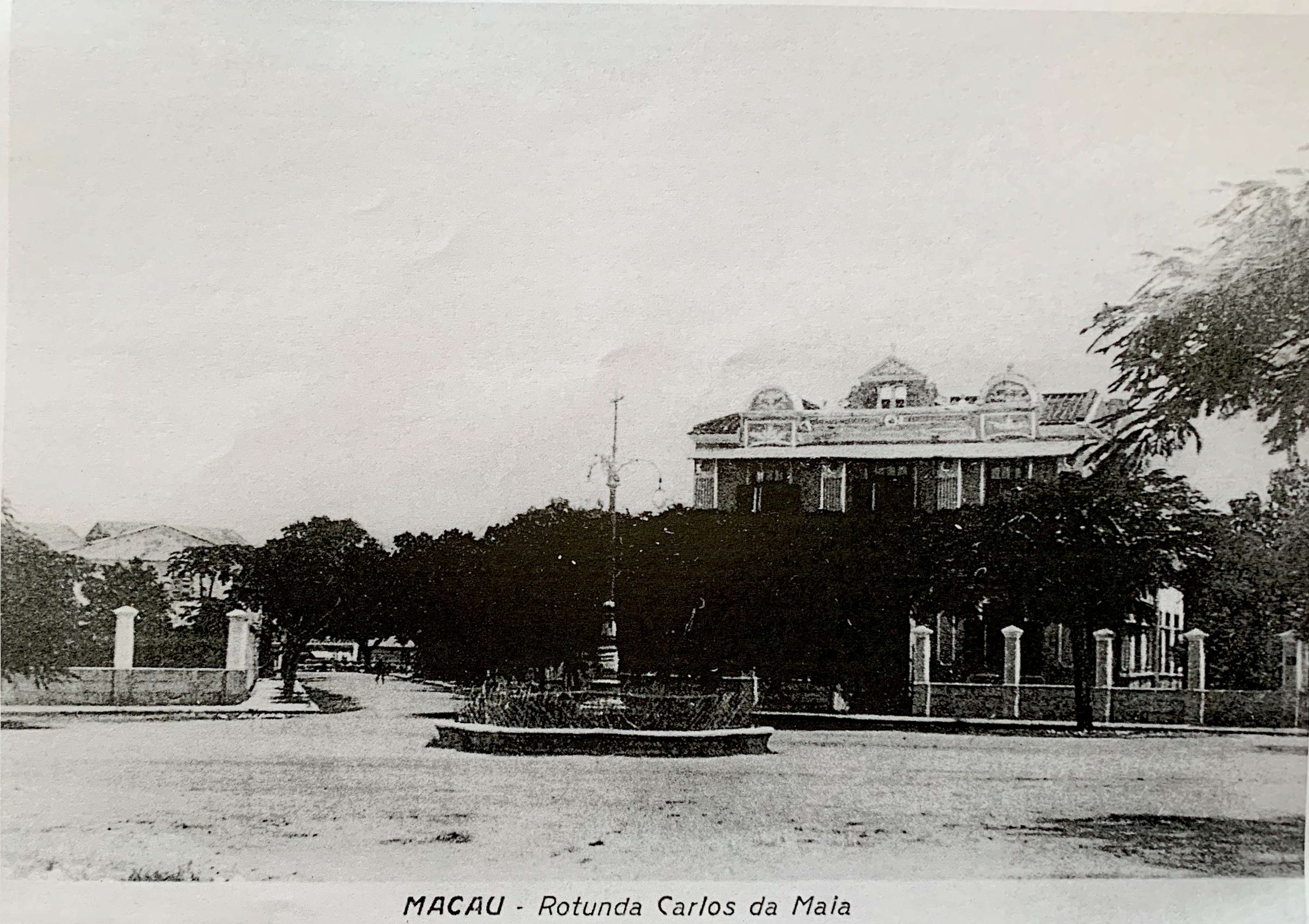
Three Lamps Roundabout (Rotunda Carlos da Maia), circa 40s, 50s. Source: Macao Archives
Three Lamps Roundabout
This is one of the few examples of old Macau streets where its Chinese name is also the one Portuguese people use. Carlos da Maia Roundabout or Rotunda dos Três Candeeiros, in Portuguese has the name of Macau’s 105th Portuguese governor, José Carlos da Maia. However, few people know it by its official name. Either in Cantonese or Portuguese, people will recognize it as the Three Lamps Roundabout, because of the large lamp with bulbs there since the start of the 20th century.
Interestingly enough, there were only three light bulbs when it was first built in 1919; the fourth one now spots, on top, was added after the refurbishment of 1999. The roundabout used to be surrounded by beautiful colonial-style buildings never higher than two stories. With time, the buildings were demolished, giving way to newer, more modern structures.
The area now hosts several clothing shops, as well as some vegetarian and local snacks restaurants and fresh fruit stalls. This is also the go-to area if you are looking for a seamstress. Unfortunately and locally speaking, the latter is a craft in decline. Few places do it well and they are mostly concentrated around the Three Lamps’ area. Walking around can be pretty confusing because every conjoining street looks the same. However, it is a good spot to start from if you intend to see Lou Lim Ieoc garden, Horta e Costa Avenue and the Red Market all at once.
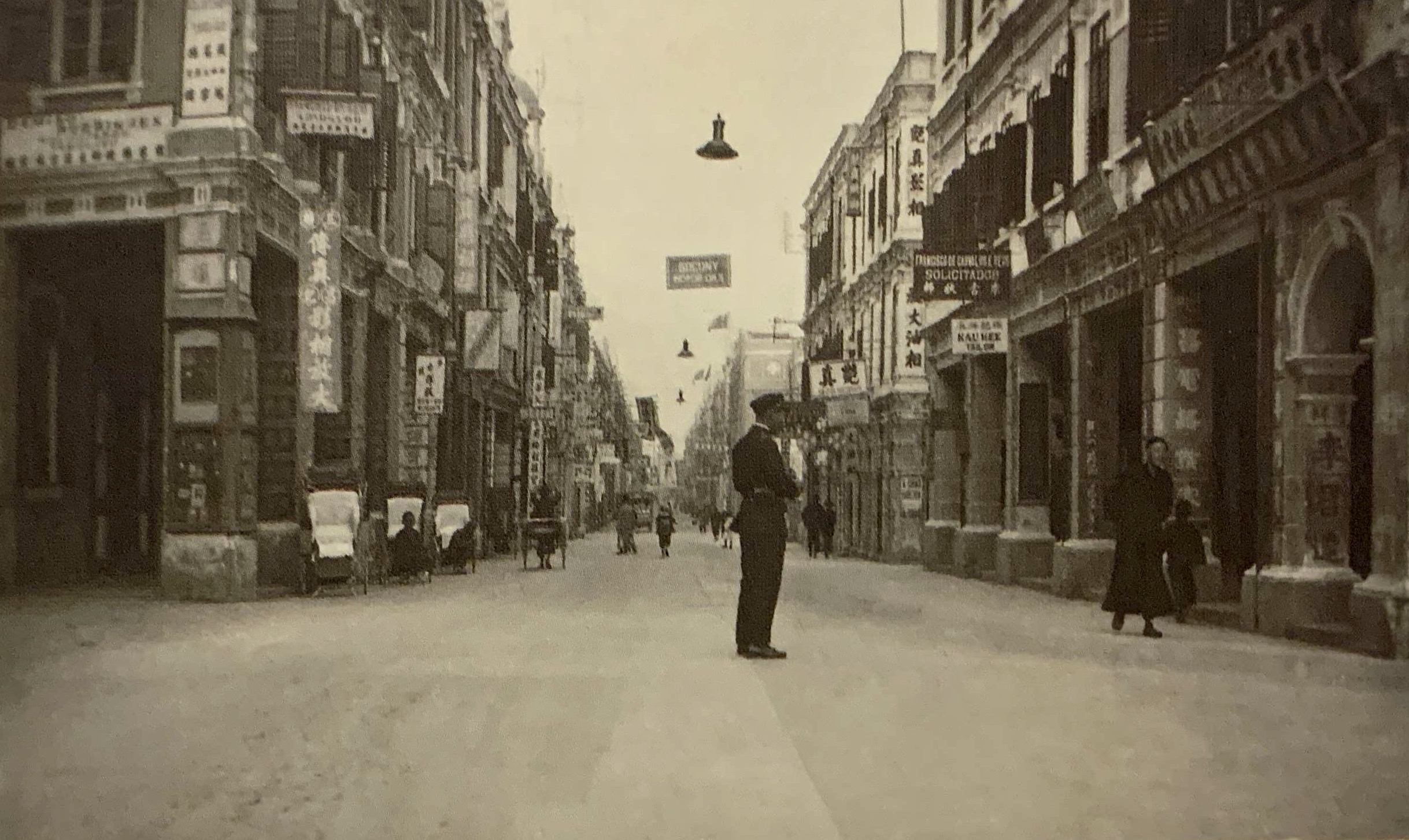
Avenida de Almeida Ribeiro circa 1925. Source: “Macau Antique Postcards” (1997) by João Loureiro
Avenida de Almeida Ribeiro (San Ma Lou)
Definitely the most popular street in Macau, Avenida de Almeida Ribeiro is commonly referred to as San Ma Lou. San Ma Lou’s literal meaning is “new road”, which was the given name when the street went from being a narrow path to the long avenue we see today. Looking more or less like it did in 1920, it is still one of the city’s main arteries, traffic and commerce-wise. With jewelry shops dotting the street and neon signs lighting up the street at night, it used to be a little gloomier in the past.
Previously, this street used to have a lot of cheap accommodations due to its closeness to the “neighborhood of pleasure”and housed seamen, sailors and other unsavory types. Presently, most of the original architectural structures have been demolished but the ones that are left stand abandoned. Buildings with significant historical value were renovated and now serve as museums, teahouses and more.
Bibliography
Websites:
Books:
- Toponímia de Macau, by Manuel Teixeira (1997)
- Curiosidades de Macau Antiga, by Luís Gonzaga Gomes (1952)

